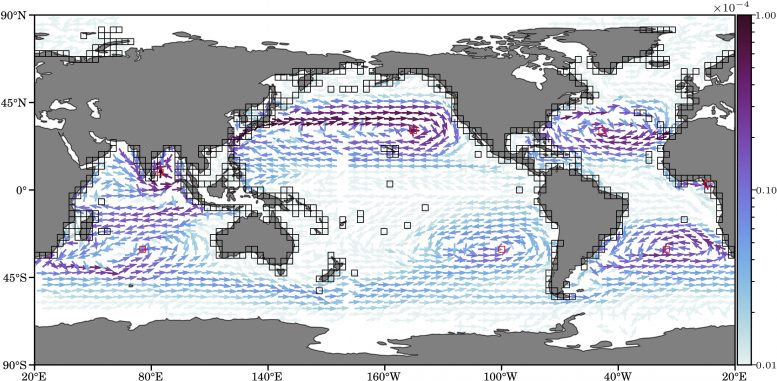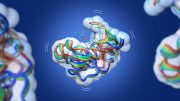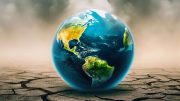
Inferred reactive probability currents of marine debris into garbage patches (red boxes). Black boxes indicate coastal boxes from which those currents emerge. The color of the arrows represents the probability of the transition route. Credit: Philippe Miron, Francisco Beron-Vera, Luzie Helfmann, and Peter Koltai
Model predicts probability of plastic debris being transported from one ocean surface region to another.
Tons of plastic debris get released into the ocean every day, and most of it accumulates within the middle of garbage patches, which tend to float on the oceans’ surface in the center of each of their regions. The most infamous one, known as the Great Pacific Garbage Patch, is in the North Pacific Ocean.
Researchers in the U.S. and Germany decided to explore which pathways transport debris from the coasts to the middle of the oceans, as well as the relative strengths of different subtropical gyres in the oceans and how they influence long-term accumulation of debris.
In Chaos, from AIP Publishing, Philippe Miron, Francisco Beron-Vera, Luzie Helfmann, and Peter Koltai report creating a Markov chain model of the oceans’ surface dynamics from historical trajectories of surface buoys. Their model describes the probability of plastic debris being transported from one region of ocean surface to another.
“Surface debris is released from the coast and distributed according to their location’s share of the global land-based plastic waste entering the ocean,” said Miron, an assistant scientist at the University of Miami. “To observe the long-term distribution of floating debris, beached debris is reinjected into the system following the same distribution. We call this model ‘pollution aware,’ because it models the injection, dispersion, and recirculation of debris within the system.”
Transition path theory allows the researchers to identify pathways or transition paths connecting a source directly to a target.
“In this work, we focus on pathways from the coast to the subtropical gyres, from one gyre to another, and from the gyres to the coast,” Miron said.
The researchers inferred debris pathways and explored garbage patch stability by quantifying the connection between them and their ability to retain trash.
“We identified a high-probability transition channel connecting the Great Pacific Garbage Patch with the coasts of eastern Asia, which suggests an important source of plastic pollution there,” said Miron. “And the weakness of the Indian Ocean gyre as a plastic debris trap is consistent with transition paths not converging within the gyre.”
They found that gyres, in general, are weakly connected or disconnected from each other.
“Indeed, in the event of anomalously intense winds, a subtropical gyre is more likely to export garbage toward the coastlines than into another gyre,” Miron said.
One of the biggest discoveries the group made is while the North Pacific subtropical gyre attracts the most debris, consistent with earlier assessments, the South Pacific gyre stands out as the most enduring, because debris has fewer pathways out and into other gyres.
“Our results, including prospects for garbage patches yet to be directly or robustly observed, namely in the Gulf of Guinea and in the Bay of Bengal, have implications for ocean cleanup activities,” said Miron. “The reactive pollution routes we found provide targets — aside from the great garbage patches themselves — for those cleanup efforts.”
Reference: “Transition paths of marine debris and the stability of the garbage patches” by P. Miron, F. J. Beron-Vera, L. Helfmann and P. Koltai, 2 March 2021, Chaos.
DOI: 10.1063/5.0030535









Be the first to comment on "How Plastic Debris Makes Its Way Into Ocean Garbage Patches"